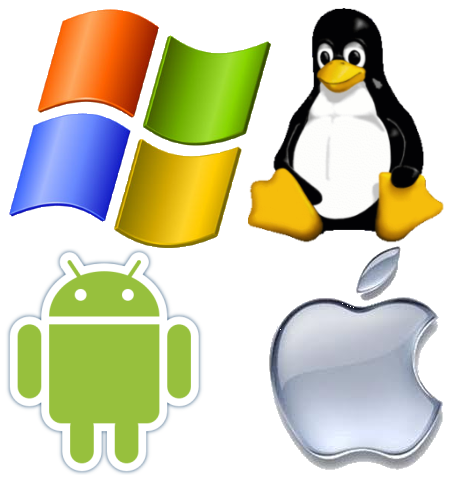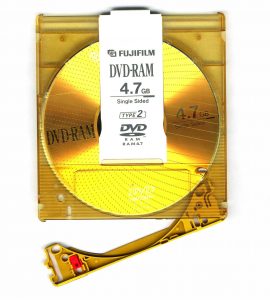Run ” free -m ” to see RAM information in MB.
Run ” free -g ” to see RAM information in GB.
Click on the power/gear icon (System Menu) in the top right corner of the screen and choose About This Computer.
You will see the total available memory in GiB.
How do you see how much RAM you have?
Find how much RAM is installed and available in Windows Vista and 7
- From the desktop or Start menu, right-click on Computer and select Properties.
- In the System Properties window, the system will list “Installed memory (RAM)” with the total amount detected.
How do I check RAM usage on Ubuntu?
In order to view the memory usage, we are using the Ubuntu command line, the Terminal application. You can open the Terminal either through the system Dash or the Ctrl+alt+T shortcut.
5 Ways to Check Available Memory in Ubuntu
- The free command.
- The vmstat command.
- The /proc/meminfo command.
- The top command.
- The htop command.
How do I free up RAM on Linux?
How to Clear RAM Memory Cache, Buffer and Swap Space on Linux
- Clear PageCache only. # sync; echo 1 > /proc/sys/vm/drop_caches.
- Clear dentries and inodes. # sync; echo 2 > /proc/sys/vm/drop_caches.
- Clear PageCache, dentries and inodes. # sync; echo 3 > /proc/sys/vm/drop_caches.
- sync will flush the file system buffer. Command Separated by “;” run sequentially.
How much RAM does Ubuntu use?
Recommended. According to the Ubuntu wiki, Ubuntu requires a minimum of 1024 MB of RAM, but 2048 MB is recommended for daily use. You may also consider a version of Ubuntu running an alternate desktop environment requiring less RAM, such as Lubuntu or Xubuntu. Lubuntu is said to run fine with 512 MB of RAM.
How do you free up RAM?
To get started, open the Task Manager by searching for it in the Start Menu, or use the Ctrl + Shift + Esc shortcut. Click More details to expand to the full utility if needed. Then on the Processes tab, click the Memory header to sort from most to least RAM usage.
How do I check my RAM speed?
To find out information about your computer’s memory, you can look at the settings in Windows. Just open up the Control Panel and click on System and Security. There should be a subheading called ‘View amount of RAM and processor speed’.
How do I run Memtest on Ubuntu?
This page explains how to perform a memory test on Ubuntu Live CD and Installed system.
- Turn On or Restart the system.
- Hold down Shift to bring up the GRUB menu.
- Use the arrow keys to move to the entry labeled Ubuntu, memtest86+
- Press Enter.
- Allow the test to run for at least one full pass.
What is the command to check RAM in Linux?
Its just like what happens on your desktop PC.
- free command. The free command is the most simple and easy to use command to check memory usage on linux.
- /proc/meminfo. The next way to check memory usage is to read the /proc/meminfo file.
- vmstat.
- top command.
- htop.
How do I see running processes in Linux?
How to Manage Processes from the Linux Terminal: 10 Commands You Need to Know
- top. The top command is the traditional way to view your system’s resource usage and see the processes that are taking up the most system resources.
- htop. The htop command is an improved top.
- ps.
- pstree.
- kill.
- pgrep.
- pkill & killall.
- renice.
How do I clear my RAM cache?
Clear Memory Cache on Windows 7
- Right-click anywhere on the desktop and select “New” > “Shortcut.”
- Enter the following line when asked for location of the shortcut:
- Hit “Next.”
- Enter a descriptive name (such as “Clear Unused RAM”) and hit “Finish.”
- Open this newly created shortcut and you will notice a slight increase in performance.
How clear DNS cache Linux?
If your Linux system is caching DNS entries, then you can try to flush the DNS cache in order to get rid of any DNS related problems. To clear DNS cache in Ubuntu, you can follow the steps below: 1. Launch Terminal (ctrl + alt + T), and type “sudo /etc/init.d/dns-clean restart“.
How do you clear RAM space?
You can make space available by deleting unneeded files and programs and by running the Windows Disk Cleanup utility.
- Delete Large Files. Click the Windows “Start” button and select “Documents.”
- Delete Unused Programs. Click the Windows “Start” button and select “Control Panel.”
- Use Disk Cleanup.
Can Ubuntu run on 1gb RAM?
Yes, you can install Ubuntu on PCs that have at least 1GB RAM and 5GB of free disk space. If your PC has less than 1GB RAM, you can install Lubuntu (note the L). It is an even lighter version of Ubuntu, which can run on PCs with as little as 128MB RAM.
Can Ubuntu run on 2gb RAM?
Yes, with no issues at all. Ubuntu is quite a light operating system and 2gb will be enough for it to run smoothly. You can easily allot 512 MBS among this 2Gb RAM for ubuntu’s processing.
Does Ubuntu use less RAM than Windows?
the short answer is yes, ubuntu does use less RAM. but to give you some way to help you with your computer’s performance maybe you should consider what is taking up the memory of your computer what are the tasks you are running.
How do I free up RAM on Android?
Android will attempt to keep the majority of your free RAM in use, as this is the most effective usage of it.
- Open the Settings app on your device.
- Scroll down and tap “About phone.”
- Tap the “Memory” option. This will display some basic details about your phone’s memory usage.
- Tap the “Memory used by apps” button.
Can I upgrade my laptop RAM to 8gb?
How to Upgrade the RAM (Memory) on a Laptop. If you can upgrade your laptop’s memory, it won’t cost you much money or time. Moving from 4 to 8GB (the most common upgrade) usually costs between $25 and $55, depending on whether you need to buy the whole amount or just add 4GB.
How can I increase my RAM on Android?
Step 1: Open Google Play Store in your Android device. Step 2: Browse for ROEHSOFT RAM-EXPANDER (SWAP) in App store. Step 3: Tap on to install option and install App in your Android device. Step 4: Open the ROEHSOFT RAM-EXPANDER (SWAP) app and increase the app.
Can you mix RAM speeds?
You are right about mixing different RAM modules—if there’s one thing you absolutely can’t mix, it’s DDR with DDR2, or DDR2 with DDR3, and so on (they won’t even fit in the same slots). RAM is pretty complicated, but there are a few things you can mix and a few things you shouldn’t. In any case, I don’t recommend it.
How do I know what DDR my RAM is?
If you open the Control Panel and navigate to System and Security, under the system subheading, you should see a link called ‘View amount of RAM and processor speed’. Clicking on this will bring up some basic specifications for your computer such as memory size, OS type, and processor model and speed.
How do I find the RAM capacity of my computer?
Right-click the My Computer icon, and select Properties from the menu that appears. Look under the General tab where it gives you information about the size of the hard drive and what operating system you use to find the amount of RAM in megabytes (MB) or Gigabytes (GB).
How can I see what services are running in Linux?
Check running services on Linux
- Check the service status. A service can have any of the following statuses:
- Start the service. If a service isn’t running, you can use the service command to start it.
- Use netstat to find port conflicts.
- Check xinetd status.
- Check logs.
- Next steps.
How do I see what services are running in Linux?
List running services using service command on a CentOS/RHEL 6.x or older
- Print the status of any service. To print the status of apache (httpd) service: service httpd status.
- List all known services (configured via SysV) chkconfig –list.
- List service and their open ports. netstat -tulpn.
- Turn on / off service. ntsysv.
How do I kill a process in Linux?
It is very easy to kill processes using the top command. First, search for the process that you want to kill and note the PID. Then, press k while top is running (this is case sensitive). It will prompt you to enter the PID of the process that you want to kill.
Does Ubuntu run better than Windows?
Ubuntu is More Resource-Friendly. The last but not the least point is that Ubuntu can run on older hardware far better than Windows. Even Windows 10 that is said to be more resource-friendly than its predecessors doesn’t do as good of a job compared to any Linux distro.
Why is Linux so much faster than Windows?
Linux is far faster than Windows. It’s why Linux runs 90 percent of the world’s top 500 fastest supercomputers, while Windows runs 1 percent of them. What’s new “news” is that an alleged Microsoft operating system developer recently admitted that Linux is indeed much faster, and explained why that’s the case.
Does Windows 10 use more RAM than Windows 8?
It can use more RAM than Windows 7, mainly due to the flat UI and since Windows 10 uses more resources and privacy (spying) features, which can make the OS run slow on computers with less than 8GB RAM. David Vanderschel, Polymath with PhD in math. Have used Windows 98, XP, Vista, 8, and 10.
Photo in the article by “Wikipedia” https://en.wikipedia.org/wiki/DVD-RAM

